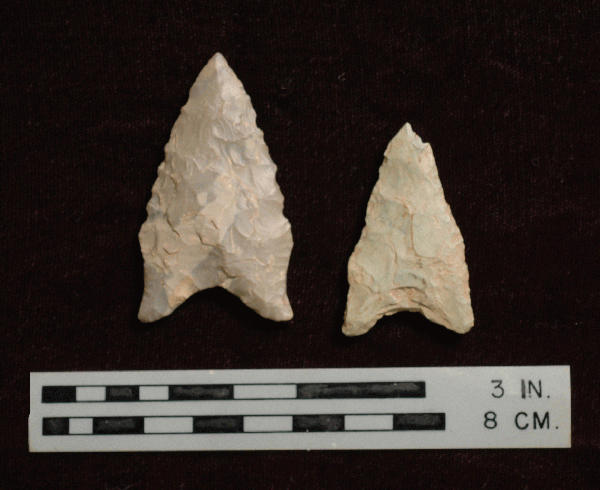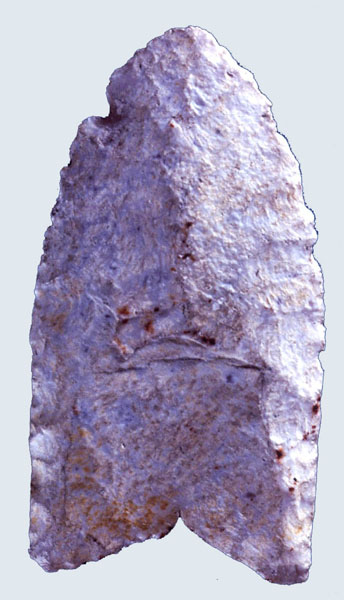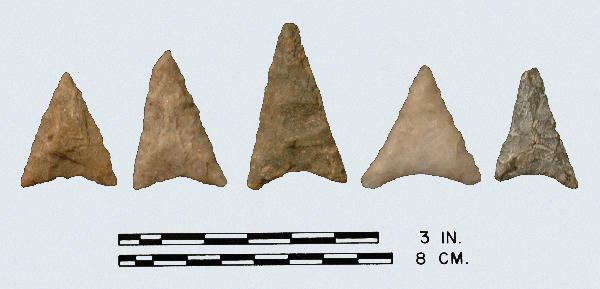
Hardaway-Dalton: chert (replica), tuff.
Type Lanceolate Paleo-Indian
Defining Attributes
The Hardaway-Dalton point has a broad, thin blade with a deeply concave base and shallow side notches. The base and side notches are ground and frequently edges are serrated.
Chronology
The Hardaway-Dalton point dates to the Paleo-Indian period, 8700 to 8200 BCE. Since the Hardaway-Dalton type of the Carolina Piedmont is similar to the Dalton type in Missouri, Coe (1964) presumed that they existed at about the same time. The Dalton point was dated to 8500 BCE at the Sloan site in Missouri.
Description
- Blade: The blade is broad and thin with rounded sides that converge into a sharp point. Examples of the Hardaway-Dalton type which are more similar to the western Dalton type have straight or slightly concave edges lined with fine serration.
- Base: Frequently re-curved, the base is deeply concave, ground and smooth.
- Size: Length ranges from 50 to 80 mm with an average of 60 mm. Width ranges from 30 to 40 mm with an average of 35 mm. Thickness ranges from 5 to 8 mm with an average of 7 mm.
- Technique of manufacture: In general, the same percussion flaking used for the Hardaway Blade; however the edges of the Hardaway-Dalton type were more finely retouched and often finished with fine serrations. Bases and side notches were thoroughly ground.
Discussion
Coe (1964) discusses the apparent connection between the Hardaway type in the Carolina Piedmont and the Dalton type in Missouri. The Hardaway type reflects the style and technique of the Dalton type, however with regional adaptations. The coarse grain stone available in the Piedmont was a definite factor that limited the quality of the Hardaway points, thus they fall short of the high quality achieved in Dalton points. The Hardaway variety fits within the rather broad range of variations that have been described for the Dalton type, and Coe presumes that they both existed at about the same period. In general, the Hardaway-Dalton type occurs rarely in Virginia.
Defined in Literature
Coe (1964) originally defined the type based on points recovered from the Hardaway Site in the Piedmont of North Carolina.
References




